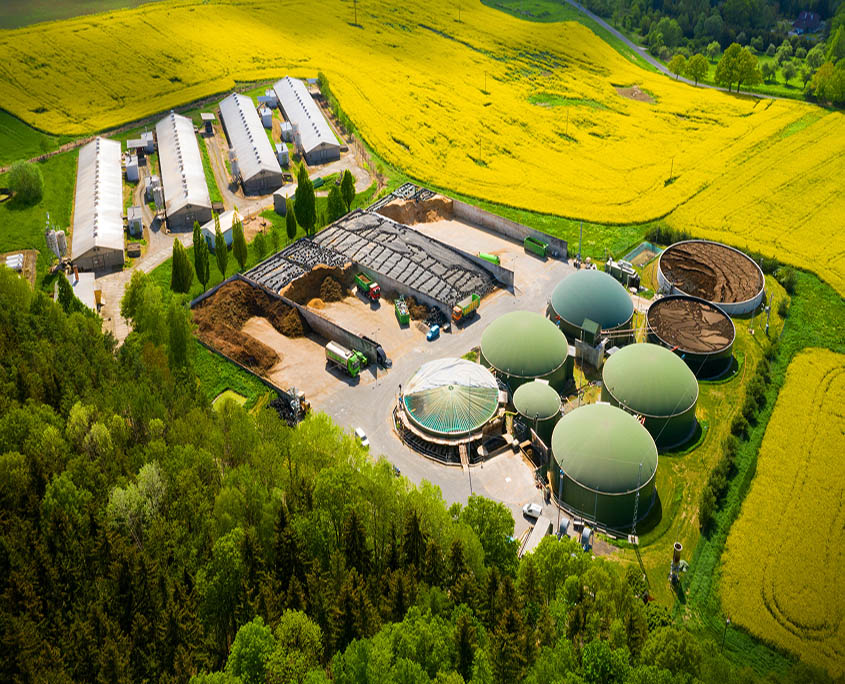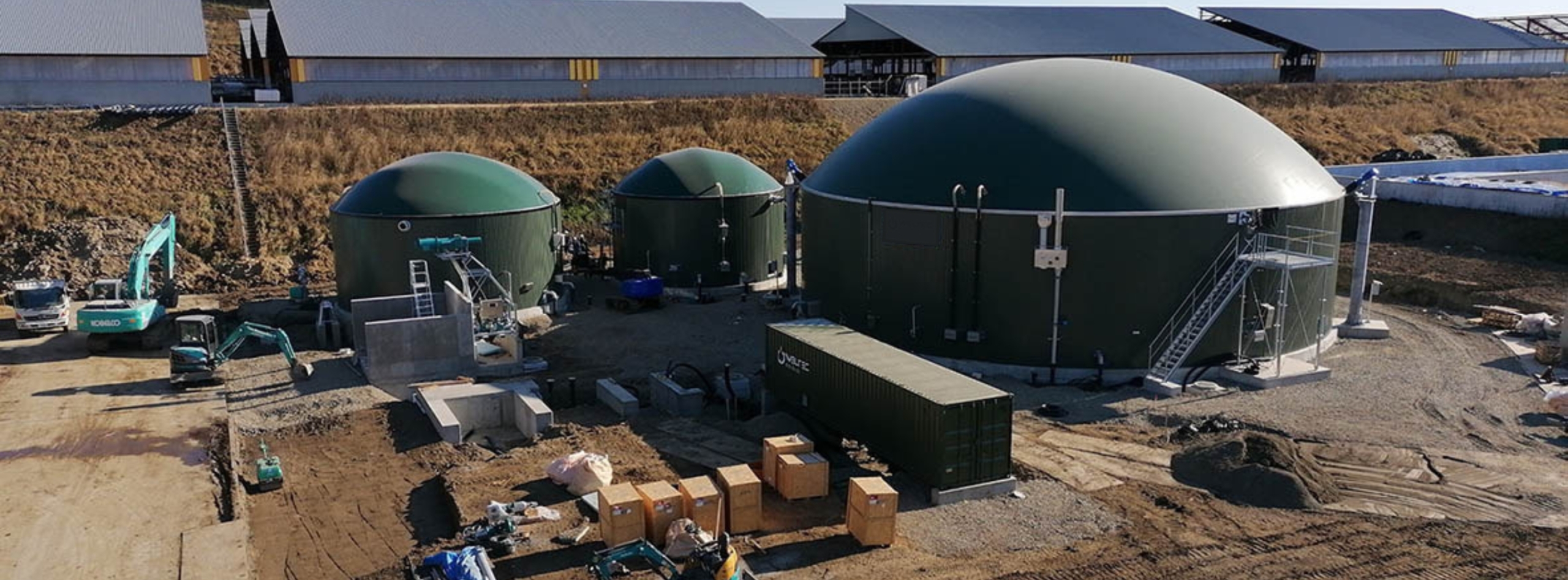Biomethane and biogas
Biogas can be produced from a wide variety of biological substrates, such as agricultural residue (catch crops, manure, straw, etc.), waste water sludge, domestic and industrial organic waste, energy crops, etc.
The biogas production process is the result of anaerobic digestion (in the absence of oxygen) by certain bacteria on these substrates. From this process, a raw, untreated biogas is produced, which consists of 50-75% methane (CH4), 25-50% carbon dioxide (CO2), and small amounts of water vapour (H2O), nitrogen (N2), oxygen (O2), and hydrogen sulphide (SH2). From this primary gas, water vapour, hydrogen sulphide, or some other components can be extracted. The most common use of biogas is to produce heat and electricity.
However, for some uses of biogas, such as injecting it into the natural gas network or using it as vehicle fuel, it is necessary for it to go through a purification process. This process consists of eliminating the carbon dioxide in its composition, in such a way as to increase the percentage of methane gas. Typically, the methane content is 96%, so it meets the standards for use as natural gas.From this point on, the biogas becomes known as biomethane.



